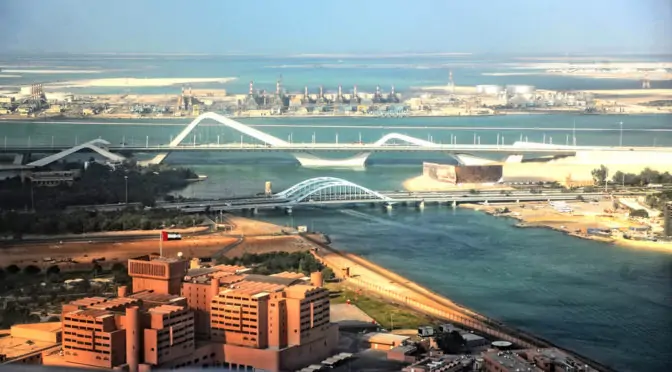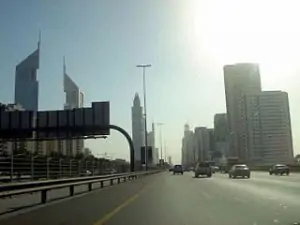The Chinese presence in cyberspace is gathering speed, scope and mass. This was especially obvious during the “One Belt, One Road” Forum for International Cooperation that took place in Beijing on 14 15 May 2017. There, the Chinese government and companies and their counterparts from more than 69 Asian, African, American and European countries signed a myriad of deals, contracts and memorandum of understanding (Jean-Michel Valantin, “The “One Belt, One Road” Summit and the Chinese Shaping of the Globalization?”, The Red (Team) Analysis Society, June 5, 2017). A large part of these deals are related to the expansion of the Chinese New Silk Road in cyberspace, which thus becomes a medium and a support of the multi-areas Chinese grand strategy,.
For example, China’s telecom companies are committing their “full support” to “Digital Kazakhstan 2020”. In the same dynamic of technological and cyber development, the Ministry of Environmental Protection of the People’s Republic of China initiated the “Joint Initiative to Establish the International Coalition for Green Development on the Belt and Road” with the United Nations Environment Program, as well as the Belt and Road Environmental Cooperation plan, while setting up “the Big Data Service Platform on Ecological and Environmental Protection” (“List of Deliverables of Belt and Road Forum”, Xinhua.net, 2017-05-15). These measures are part of a larger set of initiatives, such as the negotiations between China, Russia and Japan to install a maritime fibre optic cable along the Siberian Northern Sea Route that links the Bering Strait and Asia to Europe through the newly opened corridor that follows the Siberian coast (Marex “Norway and China Friends Again“, The Maritime Executive, 2016-12-19).
![Flag of the People's Republic of China By Drawn by User:SKopp, redrawn by User:Denelson83 and User:Zscout370 Recode by cs:User:-xfi- (code), User:Shizhao (colors) [Public domain], via Wikimedia Commons Flag of the People's Republic of China](https://redanalysis.org/wp-content/uploads/2017/06/Flag_of_the_Peoples_Republic_of_China-300x200.png)
These different examples are just samples of the mammoth and expanding cyber dimension of China. The corresponding “re-shaping” takes place through the installation of the Chinese economy “in the middle” of an international network of exchanges of products and resources. The cyber dimension is aimed at reinforcing the centrality of China in the cyberspace as well as the interconnection between the member states of the “One Belt One Road” initiative and China. In other terms, China becomes the Middle Kingdom of the cyberspace.
In the first article of this series on the strategic consequences of the Chinese cyber development, we shall look at the way the actualization of the “digital sino-sphere” is in itself a transformation of the political status of China. We shall notably ponder if China is using the Internet to develop itself, or if China is building its own national sphere in the cyberspace? In other terms, could the digitalization of China be an extension of the Chinese nation in the cyberspace, and could the cyberspace be the support of a new evolution of the Chinese nation?
The digitalization of the Middle Kingdom

Within a few years time, China has become a “digital nation”. In 2016, the world number of internet users reached 3.6 billion, out of which more than 710 million were Chinese (against 590 million internet users for China in 2013). That number includes 656 million mobile users, out of which 250 million are already using 5G network (Simon Alexander, “The Rise of the Sinosphere and the Digital Silk Road”, DCX. Technology, February 2, 2017). In other terms, one Internet user out of five is a Chinese citizen. Observers of the growth of the Chinese Internet market estimate that this number is going to almost double during the coming decade (“Timeline: China’s Internet development”, ChinaDaily.com, 2016-11-15). Their evaluation can be supported, for example, by the success of WeChat, the Chinese social network created by Tencent. Launched in 2011, WeChat reached 253 millions users in August 2013 (Theo Merz, “WeChat passes 100 millions users outside China”, The Telegraph, 15 August 2013) and, in 2017, attracted more than 889 millions users per month (“2017 WeChat Users Behavior Report”, China Channel, April 25, 2017).
![A headquarter twin tower of Tencent in Nanshan under construction By Wishva de Silva (Own work) [CC BY-SA 3.0 (http://creativecommons.org/licenses/by-sa/3.0)], via Wikimedia Commons](https://redanalysis.org/wp-content/uploads/2017/06/A_headquarter_twin_tower_of_Tencent_in_Nanshan_under_construction.jpg)
This Chinese social network can be used to chat, to exchange contents and to pay for products and services through mobile phone, with an extension on the World-Wide-Web. It also has more than 100 millions users in Asia. If this exponential rate of growth keeps on, the 1.4 billion strong population of China will be a collective user of WeChat in 3 or 4 years. Furthermore, in 2017, the WeChat company started to work on a search function that will assure an even more important presence of its hundreds of millions of users in the cyberspace. The overwhelming success of WeChat must be considered as inter-connected with the massive effort initiated by the Chinese government in order to develop the access by 80% the Chinese population to the Internet through fibre optic cables, in order to guarantee a growing broadband access to the population (“China eyes fibre optic use to expand communications systems”, Global Times, 2017/2/6).
This Internet development is deeply linked to the success of Chinese giant Internet companies, such as WeChat as we just saw, or Alibaba, the Chinese leviathan of online retail, as a positive feedback loop between Chinese customers, the Internet, the websites of the companies, the transport and distribution services as well as the massive proliferation of computers and mobile phones in the population is created. As a result, Alibaba saw the number of its active buyers rise from 133 million during the first quarter of 2012 to 454 million during the first quarter of 2017 (“Number of active buyers across Alibaba’s online shopping properties from 2nd quarter 2012 to 1st quarter 2017 (in millions)“, Statista, The Statistical Portal, 2017). The dimension of Alibaba may be better apprehended when compared to the 300 million users of Amazon.com, the online U.S. giant retail company, in the first quarter of 2017 (“120 Amazing Amazon Statistics and Facts (February 2017)”, DMR, 15 March 2017).
These are (strong) signals indicating the importance that must be given to the understanding of the Chinese Internet development strategy in considering notably the very Chinese meaning of this development, while linking it with the enormous challenges and opportunities related to the cyber development of China, as we shall now see.
From water history to digital development
Through giant companies such as Huawei, or Chinese Telecom, among others, and public organisations such as different ministries, China appears to be handling cyberspace as it handled other vital flows, such as water flows, during its long history.
Indeed, traditionally, the Chinese world vision diverges radically from the occidental one. In China, the basic principles, Yin and Yang, which are both antagonistic and complementary are spanning the whole universe, space included and their flow is in constant dynamic. Out of these principles flows the totality of the universe, i.e. the Sky, Earth, nature and humankind and their opposition make them transform into one another and thus permanently flowing. The opposition between these dynamic principles must carefully be “managed”, in order to maintain equilibrium in the human and natural world (Marcel Granet, La Pensée Chinoise, 1934). This dynamic and complementary opposition is also structuring the Taoist world vision, in which the Qi, the “matter energy” and the “Li” the principle of universal order, are different, entwined and must be nurtured and kept in harmony (Quynh Delaunay, Naissance de la Chine Moderne, L’Empire du Milieu dans la Globalisation, 2014).
In other terms, the Chinese “Weltanschauung” is centred around an understanding of the world as being a system of flows and these flows must be developed in order to develop the human society, which is not basically different from the rest of the universe, because it is moved by the same principles.
![Portrait map of China By No machine-readable author provided. Patrick Edwin Moran assumed (based on copyright claims). [GFDL (http://www.gnu.org/copyleft/fdl.html), CC-BY-SA-3.0 (http://creativecommons.org/licenses/by-sa/3.0/) or CC BY-SA 2.5-2.0-1.0 (http://creativecommons.org/licenses/by-sa/2.5-2.0-1.0)], via Wikimedia Commons Portrait map of China](https://redanalysis.org/wp-content/uploads/2017/06/301px-Portrait_map_of_China-300x239.jpg)
In very practical terms, this has led the Chinese to an understanding of their territory as being literally made of flows, like water that needs to be both used and respected, i.e. canalized in the most harmonious possible way.
The infrastructural and political mastery of water flows has indeed been a crucial and permanent feature of the multi-millennial Chinese history, as well as of its world vision (Philip Ball, The Water Kingdom, 2016). Furthermore water is also, from the Chinese point of view, part of the different dynamic elements that must be maintained into a state of evolving equilibrium. Water flows are of a vital importance for the development of agriculture, of rural and urban communities, and for transportation (Marcel Granet, La Pensée Chinoise, 1934).
The mastery of giant rivers such as the Yellow River, are a way of unifying and integrating the Middle Kingdom into one entity, despite its numerous regional, social and cultural disparities. In the same time, mastering the flow of water, from the very local to the national and international levels, is an absolute necessity because the flow of water can also become a dire threat, through excesses: not enough means drought, while too much means flood. In both cases, water catastrophes mean social, economic and human crisis and as such political crisis for a government that cannot protect its own people and that seems to be losing the “celestial mandate” (John King Fairbanks, Merle Goldman, China, a New History, 2006). This dynamic is even more important with the rapid urban and industrial development started at the end of the 1970s as exemplified by the construction of the infamous Tree Gorges dam, the largest hydropower project in the world (Brian Handwerk, “China’s Three Gorges Dam, by the numbers”, The National Geographic, June 9, 2006).
A good mastery of the flows of water and of the other flows shows that a carefully managed equilibrium between the natural world and the human world is cultivated, thanks to properly managed social, economic, and political activities, guided by the theosophical practices of Confucianism, Taoism and Buddhism (Quynh Delaunay, Naissance de la Chine moderne, L’Empire du Milieu dans la globalisation, 2014).
The notion of mastering water also refers to the notion of mastering the different kinds of flows and their interactions upon which depend the life of the Middle Kingdom. That is why the development of the mastery of water plays a central role throughout the history of China, with systems of irrigation, dams, sluice, canals. The different forms of the water mastery has been paramount for the success of agriculture, which is the foundation for population growth as well as for domestic trade, through the economic development of rural communities, as trade between communities and between provinces, are made easier by the use of waterways. Mastering water flows has thus an essential political function because it allows the biological, social and economic life of the Kingdom as well as its cohesion.
![ThreeGorgesDam-China2009 By Source file: Le Grand Portage Derivative work: Rehman (File:Three_Gorges_Dam,_Yangtze_River,_China.jpg) [CC BY 2.0 (http://creativecommons.org/licenses/by/2.0)], via Wikimedia Commons ThreeGorgesDam-China2009](https://redanalysis.org/wp-content/uploads/2017/06/ThreeGorgesDam-China2009-300x187.jpg)
This permanent quest for equilibrium and harmony is the very basis for the legitimacy of the Chinese political authorities, and has been qualified for a long time as the “Celestial Mandate”. This culture of material, social, and spiritual collective search for equilibrium turned China into a sustainable and largely self-sufficient and self-sustainable nation for thousands of years, despite important sequences of political turmoil, violence and war (John King Fairbanks, Merle Goldman, China, a New History, 2006).
This very careful control of water has given to the Chinese authorities, as well as to the population, an experience and a world vision in which the notion of flow, mastery of these flows and politics are going hand in hand. Because the cyber dimension has become a crucial part of the reality of the 21st century and, as a result, is of vital importance for people’s life and for the life of the whole Chinese nation, thus, from a Chinese political and social point of view, the mammoth development of the national cyberspace infrastructure is a necessity of the same importance and order as the mastery of the water flow.
Mastering the cyber flow
The necessity to master the cyber domain, which is understood, as explained more in terms of flows than in static terms of space, drives the creation of the infrastructures aimed at mastering this new ethereal and vital flow, upon which the social and economic life of life of numerous countries and of the great powers increasingly depend upon. As a result, the Chinese government, the Ministry of Security, the Chinese Internet companies and the Chinese telecom companies, combined with the millions of kilometres of fibre optic cables are forming a cyber nexus (“China’s Digital Transformation: The Internet Impact on Productivity and Growth“, Mc Kinsey Global Institute, 2014).
Meanwhile, the mammoth population of Internet users settles on the Internet, while using the Chinese language in order to exchange, thus creating de facto a singular community, which is also defined by its common world vision, representations and needs. Moreover, as seen, the logistical, electronic and software infrastructures of the Chinese presence in cyberspace is the result of a Chinese combined effort of the national political authorities and national companies. Thus, the combination of this state’s sponsored national endeavour with the mass created by the hundreds of millions of Chinese and the common national identity of the users turns the cyber presence of China into a literal “cyber nation” (Hoo Tian Boon, “Xi’s speech illustrates China a Responsible Cyber Nation”, China Daily.com, 2015-12-17).
![Shenzhen CBD and River By SSDPenguin at English Wikipedia (Own work by the original uploader) [CC BY 3.0 (http://creativecommons.org/licenses/by/3.0)], via Wikimedia Commons Shenzhen CBD and River](https://redanalysis.org/wp-content/uploads/2017/06/320px-Shenzhen_CBD_and_River-300x225.jpg)
The Chinese cyber nexus and its cyber nation has an importance and a meaning that transcends the notion of network of networks, which has historically defined the Internet (Richard T. Griffiths, The History of the Internet, Internet for Historians (and just about everyone else), University of Leiden, 11 October 2002). It results, in fact, into the settlement of the Chinese nation in the cyberspace. In other terms, the Middle Kingdom installs its digital dimension “in the middle” of the cyberspace.
It is from this political perspective that we are now going to have to understand the Chinese strategy of cyber security known as the “Great Firewall” as well as the consequences of this digital development on the “One Belt, One Road” initiative, also known as the “New Silk Road” Chinese grand strategy, currently deployed worldwide.
About the author: Jean-Michel Valantin (PhD Paris) leads the Environment and Geopolitics Department of The Red (Team) Analysis Society. He is specialised in strategic studies and defence sociology with a focus on environmental geostrategy.
Featured image: Matrix by Tobias_ ET via Pixabay, CC0 Public Domain




![SZ 深圳城市規劃展覽館 Shenzhen City Planning Exhibition Hall world map one belt band one road Jan 2017 Lnv2 By Yauaaisnhaongwaix (Own work) [CC BY-SA 4.0 (http://creativecommons.org/licenses/by-sa/4.0)], via Wikimedia Commons SZ 深圳城市規劃展覽館 Shenzhen City Planning Exhibition Hall world map one belt band one road Jan 2017 Lnv2](https://redanalysis.org/wp-content/uploads/2017/06/SZ_深圳城市規劃展覽館_Shenzhen_City_Planning_Exhibition_Hall_world_map_one_belt_band_one_road_Jan_2017_Lnv2-300x225.jpg) Its aim is to find international reserves of the resources and products necessary to the development and enrichment of China (Jean-Michel Valantin, “
Its aim is to find international reserves of the resources and products necessary to the development and enrichment of China (Jean-Michel Valantin, “![Before the beginning of the Belt and Road international forum By The Russian Presidential Press and Information Office [CC BY 4.0 (http://creativecommons.org/licenses/by/4.0)], via Wikimedia Commons Before the beginning of the Belt and Road international forum](https://redanalysis.org/wp-content/uploads/2017/06/Before_the_beginning_of_the_Belt_and_Road_international_forum-300x185.jpg)
![After Russian-Chinese talks2 By The Russian Presidential Press and Information Office [CC BY 4.0 (http://creativecommons.org/licenses/by/4.0)], via Wikimedia Commons After Russian-Chinese talks2](https://redanalysis.org/wp-content/uploads/2017/06/After_Russian-Chinese_talks2-300x185.jpg)
![One-belt-one-road By Lommes (Own work) [CC BY-SA 4.0 (http://creativecommons.org/licenses/by-sa/4.0)], via Wikimedia Commons One-belt-one-road](https://redanalysis.org/wp-content/uploads/2017/06/One-belt-one-road.svg_-300x202.png)
![With participants of the Belt and Road international forum By The Russian Presidential Press and Information Office [CC BY 4.0 (http://creativecommons.org/licenses/by/4.0)], via Wikimedia Commons With participants of the Belt and Road international forum](https://redanalysis.org/wp-content/uploads/2017/06/With_participants_of_the_Belt_and_Road_international_forum-300x185.jpg) President Xi further added that the NSR demands to “open [a] platform of cooperation and uphold and grow an open world economy” and to “uphold the multilateral trading regime, advance the building of free trade areas and promote liberalisation and facilitation of trade and investment » (
President Xi further added that the NSR demands to “open [a] platform of cooperation and uphold and grow an open world economy” and to “uphold the multilateral trading regime, advance the building of free trade areas and promote liberalisation and facilitation of trade and investment » (


![Saudi-Arabien-Pos in Asien Par Tzzzpfff (Travail personnel) [GFDL (http://www.gnu.org/copyleft/fdl.html) ou CC-BY-SA-3.0 (http://creativecommons.org/licenses/by-sa/3.0/)], via Wikimedia Commons Saudi-Arabien-Pos in Asien](https://redanalysis.org/wp-content/uploads/2017/05/Saudi-Arabien-Pos_in_Asien-300x275.png) In effect, the Arab mammoth oil producer looks for ways to diversity its economy and its alliances, while China looks for ways to satisfy its huge energy needs (Michael Klare,
In effect, the Arab mammoth oil producer looks for ways to diversity its economy and its alliances, while China looks for ways to satisfy its huge energy needs (Michael Klare, ![Satorp Jer Refinery, Jubail - panoramio Suresh Babunair [CC BY 3.0 (http://creativecommons.org/licenses/by/3.0)], via Wikimedia Commons Satorp Jer Refinery, Jubail - panoramio](https://redanalysis.org/wp-content/uploads/2017/05/Satorp_Jer_Refinery_Jubail_-_panoramio-300x225.jpg) Group Corporation, in order to build two refineries, one in the Chinese Fujian province, and one in Yanbu in Saudi Arabia. These refineries will further improve the petrochemical capacity of this Saudi port-city located off the Red Sea coast (Michael Tanchum, “S
Group Corporation, in order to build two refineries, one in the Chinese Fujian province, and one in Yanbu in Saudi Arabia. These refineries will further improve the petrochemical capacity of this Saudi port-city located off the Red Sea coast (Michael Tanchum, “S![Pollution over east China Voir la page pour l’auteur [Public domain], via Wikimedia Commons Pollution over east China](https://redanalysis.org/wp-content/uploads/2017/05/313px-Pollution_over_east_China-300x230.jpg)
![USAF F-16A F-15C F-15E Desert Storm edit2 By US Air Force (Source) [Public domain], via Wikimedia Commons USAF F-16A F-15C F-15E Desert Storm edit2](https://redanalysis.org/wp-content/uploads/2017/05/320px-USAF_F-16A_F-15C_F-15E_Desert_Storm_edit2-300x191.jpg) the Kingdom and the United States. Given the importance of the U.S. for Saudi Arabia since 1944, when an alliance was struck between King Abdulaaziz Saud and President Roosevelt, according to which the U.S. committed themselves to the defence of the Kingdom in exchange for a privileged partnership on oil, this move must be decrypted (Michael Klare,
the Kingdom and the United States. Given the importance of the U.S. for Saudi Arabia since 1944, when an alliance was struck between King Abdulaaziz Saud and President Roosevelt, according to which the U.S. committed themselves to the defence of the Kingdom in exchange for a privileged partnership on oil, this move must be decrypted (Michael Klare, 



 limited and will disappear over the next forty years (“
limited and will disappear over the next forty years (“![Barakah 2013-01-29 1 By IAEA Imagebank [CC BY-SA 2.0 (http://creativecommons.org/licenses/by-sa/2.0)], via Wikimedia Commons Barakah 2013-01-29 1](https://redanalysis.org/wp-content/uploads/2017/04/320px-Barakah_2013-01-29_1-300x200.jpg) to the development of a renewable and nuclear energy industrial basis. This strategy is linked with the water scarcity issue in an arid country with a rapidly growing population and an urban infrastructure (Nick Carter, “
to the development of a renewable and nuclear energy industrial basis. This strategy is linked with the water scarcity issue in an arid country with a rapidly growing population and an urban infrastructure (Nick Carter, “![Ali Khamenei receives Xi Jinping in his house (6) Par Official website of Ali Khamenei, Supreme leader of Iran [CC BY 4.0 (http://creativecommons.org/licenses/by/4.0)], via Wikimedia Commons Ali Khamenei receives Xi Jinping in his house (6)](https://redanalysis.org/wp-content/uploads/2017/04/320px-Ali_Khamenei_receives_Xi_Jinping_in_his_house_6-300x200.jpg) Saudi close neighbours. In effect, it must be noted that Iran is integrated into the NSR, and is developing trade, energy and military relationships with China as well as with Pakistan. For China the very philosophy of the NSR is to help these countries to maintain constructive relationships for their mutual benefit, so that they are lastingly able to support China’s development (Jean-Michel Valantin, “
Saudi close neighbours. In effect, it must be noted that Iran is integrated into the NSR, and is developing trade, energy and military relationships with China as well as with Pakistan. For China the very philosophy of the NSR is to help these countries to maintain constructive relationships for their mutual benefit, so that they are lastingly able to support China’s development (Jean-Michel Valantin, “ supported and exemplified by Dubai, which plans to produce 25% of its energy output from renewable in 2025 and 75% in 2050. That is why, for example, the Dubai electricity and water agency (DEWA) develops close ties with leading Chinese companies in this field (“
supported and exemplified by Dubai, which plans to produce 25% of its energy output from renewable in 2025 and 75% in 2050. That is why, for example, the Dubai electricity and water agency (DEWA) develops close ties with leading Chinese companies in this field (“